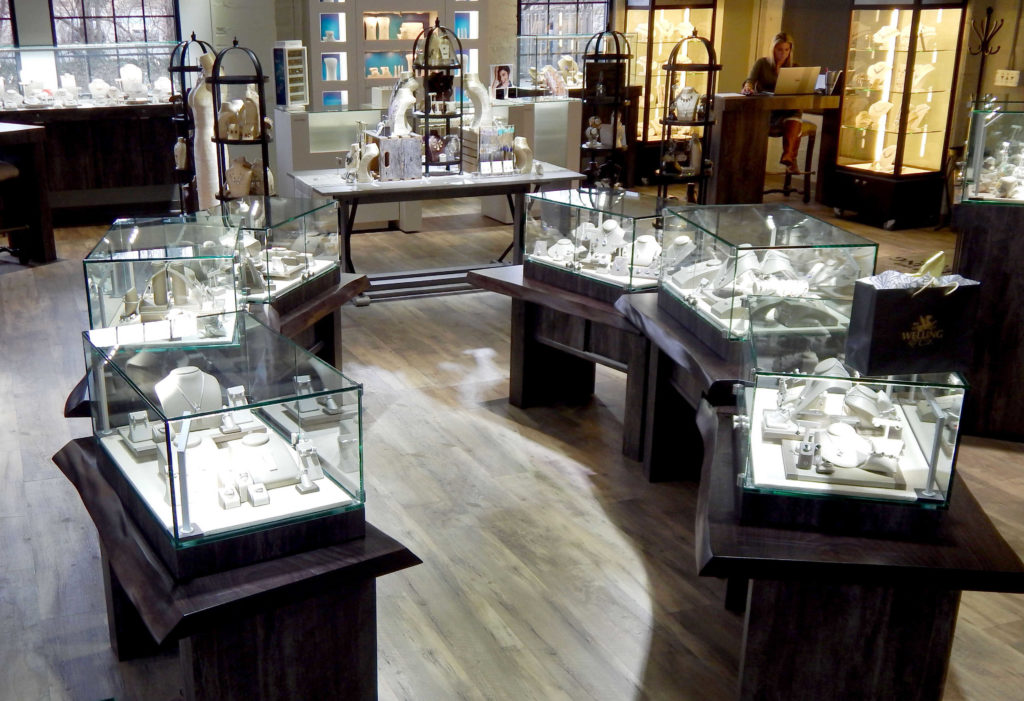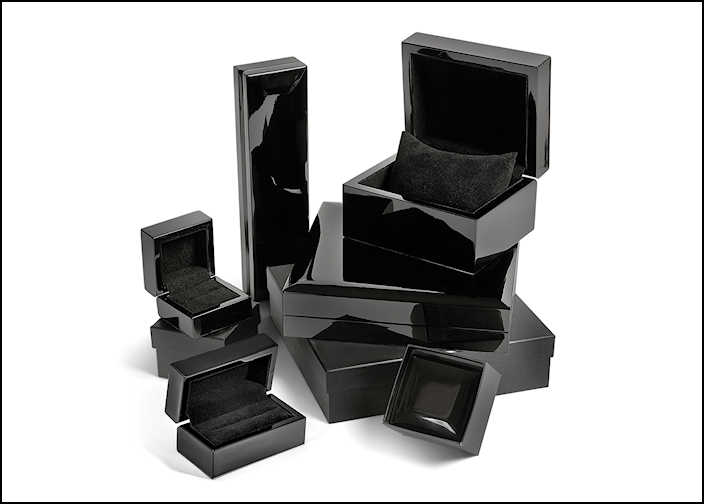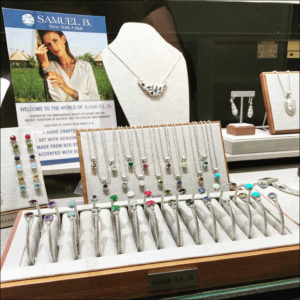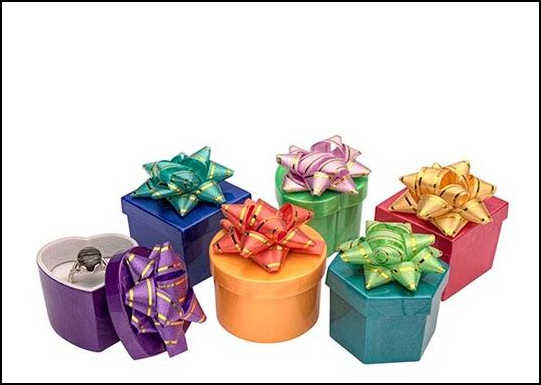Building Brand Equity
In today’s competitive marketplace savvy retail jewelers set themselves apart from the competition by creating their own authenticate brand to insulate against the unyieldingly severe forces of competition that all businesses face today.
A branded retail store creates a lasting impression in the minds of the consumers, and the differentiation goes beyond the descriptive rendering of a brand, extending to the emotional connection and passion a store instills in its customers.
 “It’s a powerful emotional connection, established by the entity, that sets it apart from its competition,” says Sam Sandberg, chairman of A. Jaffe. “A brand is a set of distinct characteristics that establishes a recognizable image or identity. Brands define the business, the intent, and what is to be trusted. Brands harness the power of emotions and subliminal needs and desires.”
“It’s a powerful emotional connection, established by the entity, that sets it apart from its competition,” says Sam Sandberg, chairman of A. Jaffe. “A brand is a set of distinct characteristics that establishes a recognizable image or identity. Brands define the business, the intent, and what is to be trusted. Brands harness the power of emotions and subliminal needs and desires.”
Sandberg pulls his expertise from his 30 years of working directly with 250 independent jewelers for a brand whose legacy dates back to 1892. He has seen that jewelers who’ve developed brand equity stand apart from their competition. Brand value is a huge component of a business’ equity value.
The retailer’s challenge, Sandberg says, is one of demand creation. “People don’t need the things we’re selling. As a result, a brand stands for all the abstractions we impart on this purchase and our lives as a whole. The product has to support the narrative, but the narrative is the driver’s seat.”
Identify What Makes You Unique
Sandberg illustrates how familiar global brands each own a word that rests in the minds of the public: Apple and invention, Mercedes and engineering, Nike and inspiration, Chanel and luxury, Rolex and success.
Independent jewelers that have achieved brand recognition, too, are connected to a word that triggers a perception — words like luxury, expertise, legacy, selection, and trends, which he discusses in detail in a Plumb Club podcast on branding strategies for independent jewelers.
Pam Levine, president of Levine Luxury Branding, encourages jewelers to consider what makes their store unique. “Take a moment to write down what you want your customers to believe and feel about your store. Does your store express your brand today? Are you clear about the impression your store leaves in the hearts and minds of your customers?”
Levine, who conducted a Plumb Club podcast on visual merchandising, underscores that people buy emotionally, even if they justify their decisions rationally. “We can trigger these buying emotions by the ways we present and display products. That means their store, displays, website, advertising, packaging, tone of voice conveys a consistent brand message. Jewelers must ensure their promise and personality comes through every place their brand interacts with a customer in a welcoming and engaging manner.”
A helpful exercise for jewelers to engage in is to regularly look through the lenses of their customers to reveal fresh ways to showcase, arrange, and highlight special categories and collections that engage consumers.
Create an Immersive Brand Experience
First impressions never get a second chance, underscores Leslie McGwire owner of Leslie McGwire & Associates, who exhibited in The Plumb Club Pavilion’s Innovation Section. “Your store’s entrance needs a visual hook to fix a customer’s attention and give them the right sensory information that causes them to stop and think, ‘there’s something here for me.”
As a customer walks through the entrance those first sensory clues, what are they seeing, hearing, smelling cause them to form opinions about your store immediately, says McGwire, who has 35 years of experience in retail design, specializing in jewelry store design. In a recent Plumb Club podcast, she offers details from lighting and flooring to wall colors and jewelry case design.

Levine underscores the importance of the flow of your store, not only for your customers, but also your staff. She advocates “a consistency of style and function” throughout the space that ties together the whole jewelry shopping experience.
McGwire suggests that about every five years, jewelers look closely at what needs to be replaced in their store – new jewelry cases and display elements, fresh paint on an accent wall, replacing flooring in high traffic area, and changing out light boxes and art. “This is the time to update your brand image.”
The Silent Storytellers
Visual merchandising is an essential part of selling and one of the keyways of creating a brand experience, imparts Levine. “The ultimate goal of successful and engaging product presentations is to inspire customers to touch, try on and buy. What customers see plays a huge role in how they feel and react. These visual cues lower the barriers and relax the defenses, putting customers at ease, giving them choices and directions to engage and explore.” She advocates the use of signs and imagery to tell stories and give cues, choices and directions.
Customized and meaningfully real experiences resonate with consumers, and it is how jewelers can set themselves apart from the rest, concurs Nathan Button, merchandising director for Rio Grande, a Richline company. “Displays instantly present your products, setting forward that initial perception of your, brand. And that perception needs to carry through as it leaves the store in the packaging. Wowing the recipient every time the jewelry box is opened!”
Keeping consistent elements within the brand, from logo to color choices and distinct details, over time fosters familiarity, reminds Button. “Obviously, begin with your business logo and preferably a distinct color. From there the focus needs to be on meaningfully accents and elements. Things like wrapping the box in a heavy coarse bow or including a handwritten note on the back of each brand tag. There’s a balance to be achieved with being familiar while unique.”
Packaging is very much an essential component of a brand’s value and a shopper’s experience — a trigger for what you are creating in your store and the emotional responses that elicits in your customers. A little detail that makes a big impression, packaging should be treated as an integral part of your marketing strategy that helps to define who you are as a brand, underscores Sharon Pisciotta for Quality Gold’s packaging and display division. The company’s latest launches of metallic/pearlescent leatherette packaging, display elements, even crinkled shredded paper in black, gold and silver are in high demand.
Packaging continues the store experience outside of the store. If the packaging is nice people will save it. A beautiful box becomes a great keepsake. A nice store bag gets reused. The perfect advertising vehicle to engage consumers and encourage repeat purchases.
Pisciotta considers packaging a great opportunity to incorporate special touches, like a note card, motivational message, coupon, event invitation, special gift-wrap, and gift with purchase like a jewelry cleaning cloth. Small efforts of customization go a long way to make the experience distinct.
After diving into the data and considering the impact to paper and fabric supply chain issues still a challenge for manufacturers this year, Button finds that warm neutrals come to the top of the trends.
 “There’s a continued movement to recycled paper, as well as organics like burlap and linen (not as impacted by production delays),” Button shares. Pisciotta concurs that more retailers are looking for eco-friendly materials to use in packaging and display.
“There’s a continued movement to recycled paper, as well as organics like burlap and linen (not as impacted by production delays),” Button shares. Pisciotta concurs that more retailers are looking for eco-friendly materials to use in packaging and display.
Moreover, the trend among jewelers is to have three styles of packaging for lower, mid and higher end items that maintain a cohesive brand look throughout, shares Pisciotta. “It’s not uncommon for jewelers to offer several tiers of packaging for different jewelry items, from fashion to heirloom.”
Brand Reinforcements
Savvy jewelers work closely with the brands they align with to reinforce their values and increase the opportunities to drive customers to their store.
“Each brand handles their PR and messaging slightly different, but the end goal is to drive traffic to your store,” explains Jordan Peck, COO of Brevani, who has shared insights for jewelers on branded content in a Plumb Club podcast. Promoting the PR initiatives of the brands a jeweler carries will increase the store’s exposure. Many of its pieces have been featured on The Bachelorette and when the show airs, the brand posts about it for retailers to share.
Peck encourages jewelers to tell their vendors what they need. “You know what your customers want, so tell the brands you work with what you need from them to make the sale happen,” he says. “Make a checklist of what you need and request it from your vendors. Most of the time, they will have what you need ready to go and happy to share it.”
The best thing jewelers can do for their store is to get custom marketing materials from the brands they work with that have the store’s logo and styles actually found in their showcases.
 Many brands provide their retailers with display elements that help tell a brand or collection story. Samuel B. offers an effective brand display for its bestselling birthstone jewelry program. “The 70-unit presentation is designed with a small footprint, best angle for product viewing,” describes Mathew Behnam, vice president of sales and marketing. “We’ve taken a great deal of time to make sure our custom displays are not only attractive but are easy for sales associates to take products off and put them back on and sized to fit most showcases.”
Many brands provide their retailers with display elements that help tell a brand or collection story. Samuel B. offers an effective brand display for its bestselling birthstone jewelry program. “The 70-unit presentation is designed with a small footprint, best angle for product viewing,” describes Mathew Behnam, vice president of sales and marketing. “We’ve taken a great deal of time to make sure our custom displays are not only attractive but are easy for sales associates to take products off and put them back on and sized to fit most showcases.”
Levine underscores that every detail contributes to the experience, and the experience needs to fully support your brand, both in store and through all channels of engagement (website, social media, community involvement).

